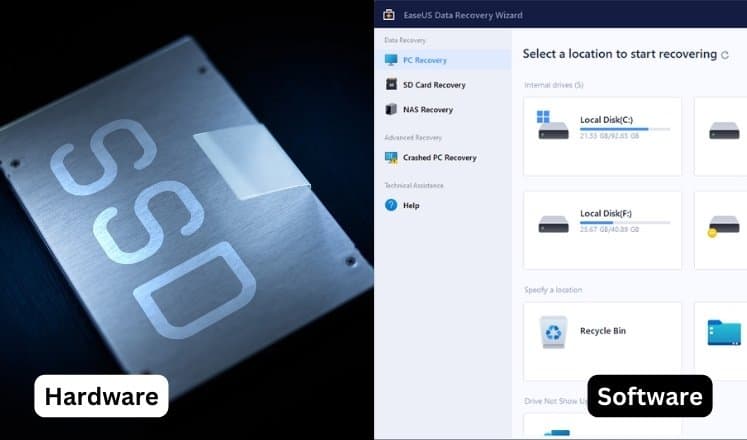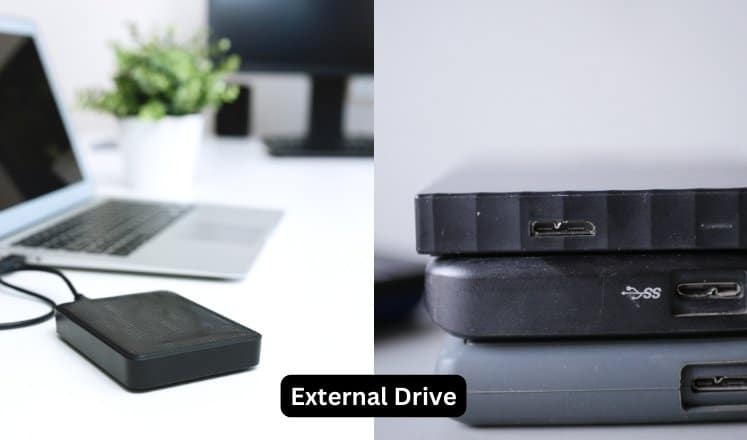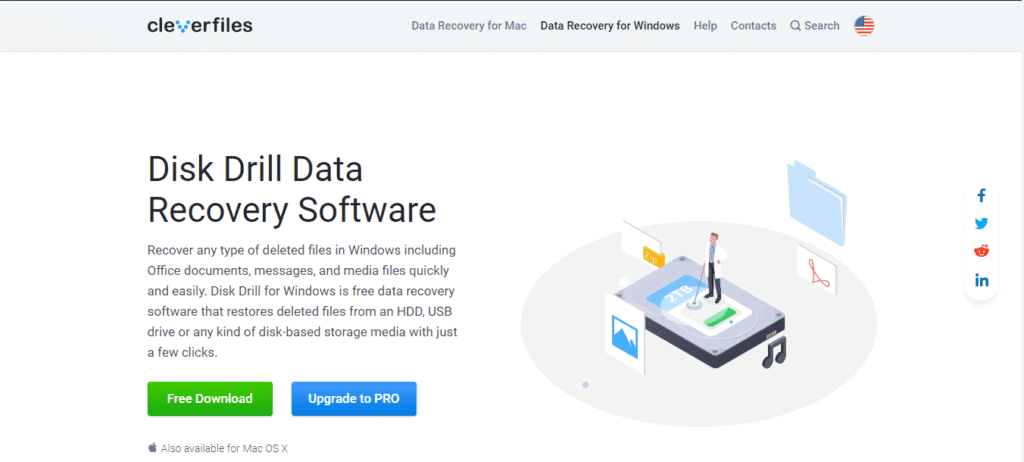
Home - Data Recovery Singapore: Safeguard and Restore your Digital Assets
Data Recovery Singapore: Safeguard and Restore your Digital Assets
Whether it’s family photos, business documents, or years of cherished memories, losing your data can be devastating.
But fear not! In this article, we will demystify the process of data recovery and show you how to safeguard and restore your valuable files. Using the latest techniques and technologies, we’ll guide you through the steps to ensure your data is secured and retrieved in case of unforeseen events.
From understanding the common causes of data loss to implementing preventive measures, we’ll cover it all. We’ll explore the different types of data recovery software and services available, as well as provide expert tips on how to successfully recover your lost data.
So, whether you’re a tech-savvy professional or a casual computer user, this article is for you. Get ready to take control of your digital assets and never worry about losing your data again. Let’s dive in and safeguard your valuable information!
Causes of data loss

Data loss can occur due to various reasons, and understanding the common causes is the first step towards prevention. One of the most common causes is hardware failure. Whether it’s a hard drive crash, a faulty memory chip, or a damaged solid-state drive, hardware failure can result in the loss of your precious data. Other causes include accidental deletion, software corruption, virus attacks, and natural disasters such as fires or floods.
Common Causes of Data Loss:
- Hardware Failure: This is a major cause of data loss. Hardware components in your computer, such as the hard drive, memory chips, or solid-state drives, can fail unexpectedly. When they do, the data stored on them can become inaccessible or lost.
- Accidental Deletion: Human error plays a significant role in data loss. Accidentally deleting files or formatting the wrong drive can result in the permanent loss of data if not properly backed up.
- Software Corruption: Software issues, like corruption of the operating system or application files, can make your data unreadable or inaccessible. This can occur due to crashes, improper shutdowns, or malware infections.
- Virus and Malware Attacks: Viruses and malware can infect your computer and corrupt or delete your files. Ransomware, for example, can encrypt your data, rendering it inaccessible until a ransom is paid.
- Natural Disasters: Events like fires, floods, earthquakes, or power surges can physically damage your computer and storage devices, leading to data loss.
- Theft: Theft of your computer or external storage devices can result in the loss of both hardware and data.
- Human negligence: Neglecting to perform regular backups or not implementing security measures can leave your data vulnerable to various risks.
The Importance of Preventive Measures:
Data loss can affect anyone, regardless of their technical expertise. Here’s why it’s crucial to take preventive measures:
- Data Recovery May Be Expensive or Impossible: Retrieving lost data can be expensive, and in some cases, it may be impossible. Prevention is more cost-effective than data recovery.
- Protection of Valuable Information: Personal documents, photos, work files, and financial records are valuable. Implementing preventive measures helps safeguard these important assets.
- Business Continuity: For businesses, data loss can lead to downtime, financial losses, and damage to reputation. Data backups and disaster recovery plans are vital for business continuity.
- Peace of Mind: Knowing your data is backed up and protected provides peace of mind, reducing stress and anxiety related to potential data loss.
- Ease of Recovery: With proper backups and security measures in place, you can quickly recover lost data and minimize disruptions.
In summary, understanding the various causes of data loss is essential, as it highlights the importance of proactive steps to prevent data loss. Regular backups, security measures, and safe computing practices are key elements in minimizing the risks associated with data loss.
Types of data loss

Data loss can be categorized into two main types: logical and physical. Logical data loss refers to situations where the data becomes inaccessible due to software or file system issues. This can occur due to accidental deletion, formatting, or corruption of the storage media. On the other hand, physical data loss occurs when there is physical damage to the storage device, making the data inaccessible.
This explanation breaks down data loss into two primary types: logical and physical.
Logical Data Loss:
- Logical data loss happens when you can’t access your data because of problems related to software or the file system.
- It could occur if you accidentally delete files, format your storage device, or experience corruption in the way data is stored.
- Think of it as a situation where your data is there, but something’s preventing you from reaching it, like a locked door.
Physical Data Loss:
- Physical data loss, on the other hand, is when there’s actual damage to your storage device itself, like your hard drive or SSD.
- This physical damage makes it impossible to reach your data.
- It’s like trying to read a book with pages that are torn or missing.
Knowing which type of data loss you’re dealing with is crucial because it helps you figure out how to recover your data.
For Logical Data Loss:
- This often involves software or file system issues, so you can usually use data recovery software to get your data back.
- It’s like using a tool to unlock the door and access your data.
For Physical Data Loss:
- When there’s physical damage, you’ll likely need professional help.
- Think of it as needing a repair expert to fix your damaged book before you can read it again.
In a nutshell, understanding the type of data loss you’re facing is like knowing whether you need a key or a book repair expert to regain access to your valuable information.
Prevention of data loss

Prevention Beats Cure:
You’ve probably heard the saying, “Prevention is better than cure.” Well, it’s especially true when it comes to safeguarding your valuable data. Taking steps to prevent data loss is much easier and less stressful than trying to recover lost data later.
Regular Backups: The Foundation of Data Protection:
Imagine your data as a collection of precious items. The first and most crucial step in protecting these items is to regularly back them up. This means making copies of your files and keeping them in a safe, separate place.
- You can do this by using external hard drives, which are like sturdy storage boxes for your data.
- Or you can store your data in the cloud, which is like a secure, online vault for your files.
- There’s also network-attached storage (NAS), which is like having a personal data storage center at home.
Regular backups ensure that even if something happens to your original data, you have a copy to fall back on. It’s like having a spare key to your house in case you lose the original.
Keep Your Software Up to Date: It’s Like Locking Your Doors:
Think of your computer’s software and operating system as the locks on your data. Just like you update your locks for home security, it’s essential to keep your software up to date.
- Software updates often include security fixes, which are like strengthening the locks on your data.
- These fixes help protect your data from potential threats, like online intruders trying to steal it.
Invest in Antivirus Software: Your Data’s Bodyguard:
Imagine your computer as your home, and your data as your precious belongings inside. You wouldn’t leave your home unprotected, right? That’s where antivirus software comes in.
- Antivirus software is like having a bodyguard for your data.
- It scans your computer regularly, looking for any suspicious or harmful software that could hurt your data.
- If it finds anything harmful, it removes it, keeping your data safe and sound.
In summary, think of data loss prevention as safeguarding your valuable possessions. Regular backups, up-to-date software, and antivirus protection are your tools to keep your data secure. It’s like locking your doors, having spare keys, and hiring a bodyguard for your digital treasures.
Data backup options

Data Backup Options: Your Choices Explained:
When it comes to backing up your data, you have several options to pick from. Your choice depends on your specific needs and preferences. Let’s explore these options:
1. External Hard Drives: Your Portable Safes:
Imagine external hard drives as portable safes for your data. They offer large storage capacities, similar to having big storage rooms. Here’s how they work:
- You manually copy or transfer your important files to these hard drives.
- It’s like putting your valuables in a secure, physical vault.
- You can store them at home or take them with you for added security.
2. Cloud Storage: Your Virtual Safe in the Sky:
Think of cloud storage as a virtual safe in the sky where you keep your data. It’s incredibly convenient because you can access your files from anywhere as long as you have an internet connection:
- Popular providers include Google Drive, Dropbox, and Microsoft OneDrive.
- They offer both free and paid plans, so you can choose what fits your storage needs.
- Your data is stored securely on remote servers, which is like having a digital safe with your files stored in a bank’s vault.
3. Network-Attached Storage (NAS): Your Personal Data Center:
If you have multiple devices and want a central place for data backup, a NAS device might be your best bet. It’s like having your own data center at home:
- NAS devices are like mini storage servers that connect to your home network.
- They allow you to access and back up your files from multiple devices.
- It’s like having your personal library where you can access your books (or files) from any room in your house.
In summary, choosing the right data backup option is like deciding where to store your valuables. External hard drives are your portable safes, cloud storage is your virtual safe in the sky, and NAS is your personal data center. The choice depends on your needs and how you want to access and protect your data.
Data recovery methods
Even if you’ve taken steps to prevent data loss, accidents can still happen. When they do, it’s essential to know about data recovery methods that can help you retrieve your lost data. Here’s one of the primary methods:
Using Data Recovery Software:
- Imagine data recovery software as digital detectives trained to find your missing files. These tools are designed to scan your storage device, like a detective searching for clues.
- They work by examining the file system, which is like a map that shows where your files are located. When you delete a file or it gets lost, it’s like a page being torn out of the map.
- Data recovery software can identify these missing pages and help you put your map (or files) back together.
- There are many data recovery software options available, some for free and others that require payment. They often come with user-friendly interfaces, making it easy for anyone, even if you’re not a tech expert, to use them.
- Think of these tools as your trusty sidekicks when you’re on a quest to find lost treasures in a maze.
Examples of Data Recovery Software:
- A few popular choices include EaseUS Data Recovery Wizard, Recuva, and Disk Drill. These software tools can help you recover lost or deleted files effectively.

In summary, data recovery software acts like digital detectives that can scan your storage device, analyze the file system, and help you recover your lost files. They offer user-friendly interfaces, making data recovery accessible to both tech-savvy and non-technical users. So, when data loss strikes, you have reliable tools at your disposal to help you retrieve your valuable data.
When DIY Methods Aren’t Enough: The Role of Professional Data Recovery:
In some cases, data loss may be too severe or complex for DIY data recovery methods. This is where professional data recovery services come in. Professional data recovery experts have the knowledge, experience, and specialized tools to recover data from severely damaged or corrupted storage devices.
When DIY Methods Aren’t Enough: The Role of Professional Data Recovery:
In some situations, data loss can be so severe or complicated that DIY data recovery methods may not cut it. That’s where professional data recovery services step in. Here’s why they are essential:
Expertise and Specialized Tools:
- Professional data recovery experts are like seasoned detectives in the world of data. They possess a deep understanding of how data is stored and can handle even the most complex cases.
- They have access to specialized tools and technologies specifically designed for data recovery. Think of these tools as high-tech gadgets that only experts know how to use effectively.
Physical Data Loss: A Critical Challenge:
- Physical data loss, like when your hard drive is acting up or your device has been exposed to water damage, is a different beast. It’s like trying to fix a broken car engine without the right tools – it’s complicated and risky.
- Attempting to recover data from physically damaged devices without the proper tools and expertise can be like trying to perform surgery without medical training. It can potentially make the situation worse and make data recovery impossible.
When to Call the Pros:
- If your data loss involves physical damage or if you’ve tried DIY methods but haven’t succeeded, it’s highly recommended to seek professional help.
- Also, if your data is exceptionally valuable, irreplaceable, or crucial for business operations, professionals can provide the best chance of recovery.
A Complex Puzzle Needs a Skilled Solver:
- Imagine data recovery as solving a complex puzzle. DIY methods are like handling the easier pieces, but when it gets too intricate, professionals are the skilled solvers who can put it all back together.
- So, while DIY methods are excellent for many data recovery needs, there are situations where the expertise and specialized tools of professionals are your best bet.
In summary, professional data recovery services are essential when data loss becomes too severe or complicated. Physical data loss and exceptionally valuable data are scenarios where professionals shine. It’s like calling a seasoned detective when the mystery becomes too tricky for amateur sleuths. So, when in doubt or facing a complex data loss situation, don’t hesitate to seek the expertise of professionals.
Data recovery services and pricing
When it comes to data recovery, choose RepairX for reliable services. Look for a provider with a strong track record, like RepairX, backed by customer reviews and expertise. Keep in mind that costs vary based on complexity. We offer a range of options to recover your valuable data.
Costs vary based on complexity, so contact us to discuss your data recovery needs.
Conclusion
In this digital age, data recovery plays a crucial role in safeguarding and restoring our precious digital assets. Understanding the common causes of data loss, implementing preventive measures, and knowing the different data recovery options available can help us protect our valuable information.
Remember to regularly back up your data using reliable methods such as external hard drives, cloud storage, or network-attached storage (NAS). In case of data loss, consider using data recovery software or seek professional assistance if DIY methods are not suitable.
By taking proactive steps to protect and recover our data, we can ensure that our precious digital assets are safe and accessible when we need them most. Don’t let data loss be a nightmare; empower yourself with the knowledge and tools to safeguard and restore your valuable files. Your digital assets deserve the best protection!
admin@repairx.sg
Share on:
Facebook
Twitter
WhatsApp



